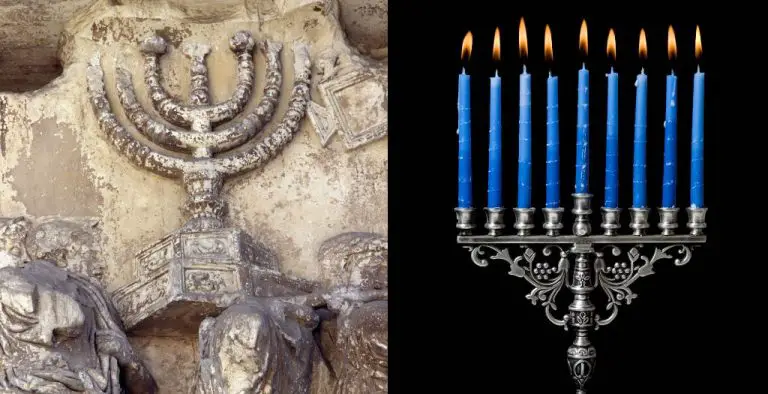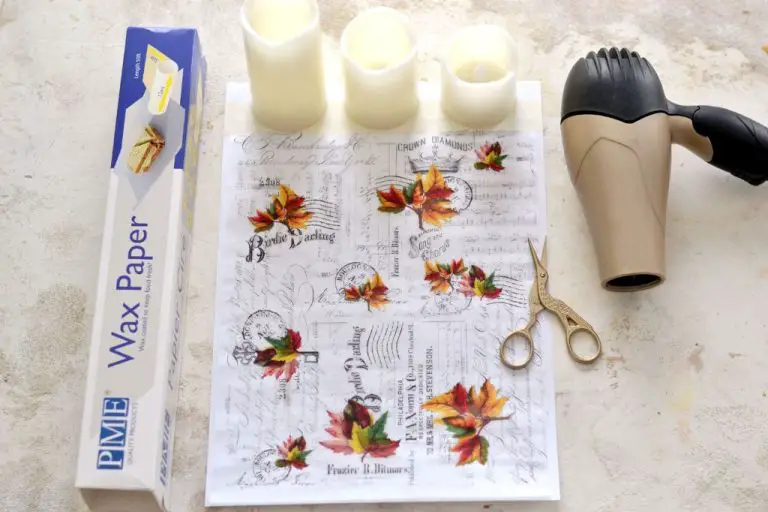Can Candles Be Used As Decoration?
Decoration refers to objects that are aesthetically pleasing and used to adorn a space. Decorations like candles add visual interest to a home and help set a mood or ambiance. Unlike functional items, decorations are meant solely for appearance and don’t serve a practical purpose. They provide an opportunity to express personal style and creativity.
Candles make classic decorative accessories in any room. Their warm, flickering glow contributes ambiance. Candles come in an endless variety of colors, shapes, sizes and scents, allowing for lots of decorative flexibility. They can be used alone or incorporated into displays with other decorative items. Candles make spaces feel cozy and inviting. When strategically placed, they draw attention to specific areas. Their versatile decorative nature has made candles a popular option for centuries.
History of Candles
The history of candles tracks back over 5,000 years to ancient Egypt and China. Early candles were made from tallow (rendered animal fat) and wicks from dried fibrous vegetation like papyrus, flax, and walnut shells. Candles in ancient Egypt were mainly used for illumination and religious ceremonies. Egyptians would burn candles after sundown to keep evil spirits at bay. In China, candles were burned for spiritual ancestors on ancestor day. Candles later emerged in Roman, Jewish and Christian cultures, serving uses from timed marking to religious rituals. Early European candles were made from beeswax from beehives managed by landlords.
Candle Varieties
There is a diverse array of candle varieties to choose from for home decor. Here are some of the most common types:
Standard Candle Forms
- Tapers – Slim, cylindrical candles that generally range from 4 to 36 inches tall. Tapers have a simple, classic style. They are commonly used in candelabras or as part of dinner table centerpieces.
- Pillars – Cylindrical candles that come in a variety of widths and range from 4 to 36 inches tall. They are wider than tapers and give a warm, inviting glow. Pillar candles make great standalone decorative elements.
- Votives – Short and stout candles usually around 1-3 inches tall. Their name comes from the Latin word “votum” meaning vow, as they were originally made for religious ceremonies. Nowadays votives are wildly popular for home decor. They come in glass containers to catch melted wax.
- Tealights – Mini candles about an inch tall that come nested in a thin metal holder to encase the melted wax. Tealights are a versatile and inexpensive way to add small candles throughout a home’s decor.
Wax Types
- Paraffin – A petroleum byproduct that produces an odorless, colorless wax for candles. Paraffin burns cleanly and costs less than other wax varieties.
- Soy – Made from hydrogenated soybean oil. Considered the most eco-friendly option and burns longer and cleaner than paraffin.
- Beeswax – Created in the hive by honey bees to build comb. It has a sweet, honey-like scent when burning and is non-toxic and biodegradable. Beeswax is more expensive but prized for a natural, pleasant ambiance.
Candle Aesthetics
Candles come in a diverse range of colors, shapes, sizes, and scents that allow for creative, atmospheric displays. Color has a strong impact on mood and ambiance. Bold red or orange candles can create a stimulating, festive feeling, while pale blue or lavender candles instill a sense of tranquility. Grouping candles of a single color together makes a striking visual statement.
Varying candle heights adds visual interest to a display. Mixing pillar candles, tapers, tea lights, and votives creates an appealing composition. Unscented candles allow natural wax aromas to come through, while scented candles infuse spaces with inviting fragrances like vanilla, pine, or fresh linen.
Candle shape also influences mood. Round pillars and spheres impart stability, while tall tapers and columns suggest uplifting verticality. Wavy or carved candles introduce an organic, naturalistic quality. Frosted or etched candle surfaces diffuse and temper a flame’s glare for a soft, romantic glow. Overall, thoughtfully blending various aesthetic elements allows candles to enhance an environment’s atmosphere.
Candle Safety
When using candles as decoration, there are some important fire safety considerations to keep in mind. Candles are an open flame and if left unattended or used improperly, can lead to fires.
Be sure to keep candles away from flammable objects and out of reach of children and pets. Never leave burning candles unattended – always extinguish them before leaving the room. Trim wicks to 1⁄4 inch before lighting to avoid excess smoke and uneven/high flames that can catch fire.
Always place candles on an appropriate surface and in sturdy, tip-resistant candleholders. Extinguish pillar and taper candles when they burn to within two inches of the holder. Extinguish container candles before the last half inch of wax begins to melt.
Follow these important candle safety rules when using candles for decorative purposes in the home to help prevent dangerous fires and accidents.
Decorative Uses of Candles
Candles can be used in many decorative ways around your home to add warmth, ambiance, and style to any space. Some popular decorative uses for candles include on table arrangements, as outdoor lighting, windowsills, and on shelves and mantles.
Candles make charming accents on table arrangements. Cluster several candles together in varying shapes, sizes, and heights for drama and visual interest. Light a few candles for a delightful tablescape at dinnertime or special occasions. Place candles in elegant candleholders for dinners or mix and match interesting everyday objects like glass jars or tin cans for a rustic flair.
Outdoors, line a pathway or steps with bright candle lanterns to welcome guests in style. Place glowing votive candles inside paper bags or glass hurricane shades weighted with sand or rocks for a festive party setting on the patio, deck, or garden.
Illuminate a relaxing spot by your windowsill with a scented candle or tea light. The flickering glow of a candle can make reading by a breezy window even more enjoyable.
Display pillar candles of varying heights on bookshelves, console tables, sideboards, mantles, and other shelving for a decorative accent to any room. A pair of slim tapers on antique candlesticks makes a stately mantle vignette to showcase in a formal living room or dining room.
Seasonal Candle Decor
Scented candles are a popular and festive way to decorate for seasonal holidays. Here are some ideas for scented candles to celebrate various occasions:
Spring and Easter
- Floral fragrances like jasmine, cherry blossom or lavender for Easter.
- Fresh green and grassy scents for spring.
- Citrus scents like lemon and orange for spring.
Halloween
- Spiced pumpkin, cinnamon and nutmeg fragrances.
- Spooky fragrances like patchouli, smoke, vanilla and amber.
- Green apple, berry and citrus scents for a fresh and fruity Halloween.
Thanksgiving
- Warm baking fragrances like pumpkin pie spice, cinnamon and nutmeg.
- Spiced apple, cranberry and clove fragrances for fall.
Creative Candle Displays
Candles make for great decorative accents in any room of the house. Get creative with how you display candles by trying some fun DIY projects or unique display ideas. Here are some tips:
Floating Candles
Create a gorgeous floating candle display in a glass bowl or vase. Attach small votive candles to artificial flower rings or disks cut from foam sheets and float them on water.
Painted Glass Candle Holders
Make your own painted glass votive holders to display candles in by decorating the outside of glass jars or containers with acrylic craft paint. Etch patterns, create ombre effects, or glue on gems for sparkle.
Tea Light Centerpieces
Arrange tea lights in the center of a wreath form, baking tray, or even an old picture frame to create bright, beautiful candle centerpieces. Use colors that coordinate with your decor.
Candle Etiquette
When it comes to candle etiquette, there are a few key guidelines to keep in mind for properly lighting and extinguishing candles:
When to Light Candles
Candles create ambiance and set the mood, so consider lighting candles for intimate dinners, relaxing baths, or during relaxation time. However, use discretion and avoid keeping candles lit for extended unattended periods.
Blowing Out Candles
Leaning over a lit candle to blow it out can be dangerous, as hair, clothing or décor could catch fire. Instead, carefully pinch the wick or use a snuffer to extinguish the flame. For birthday or special event candles, make a wish before blowing them out in one breath.
Following basic candle etiquette helps ensure safe and enjoyable candle use for both aesthetic and decorative purposes.
Conclusion
As the content covered, candles can in fact be excellent decor pieces with their wide range of styles, colors, and scents. They can add warmth or set a romantic mood. Used properly and safely, candles can create an inviting ambiance in nearly any room as well as for holidays, events, and special occasions.
Candles make versatile decorative accents that can match almost any decor theme or mood you want to set. They come in all shapes and sizes from simple votives to ornate candelabras. Fragrances give another sensory element beyond visual beauty. Care must be taken with open flames but overall, candles enhance indoor spaces with their soft glow that no other lighting source can truly replicate.




